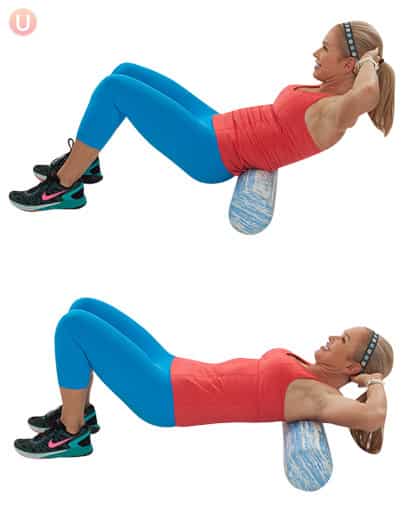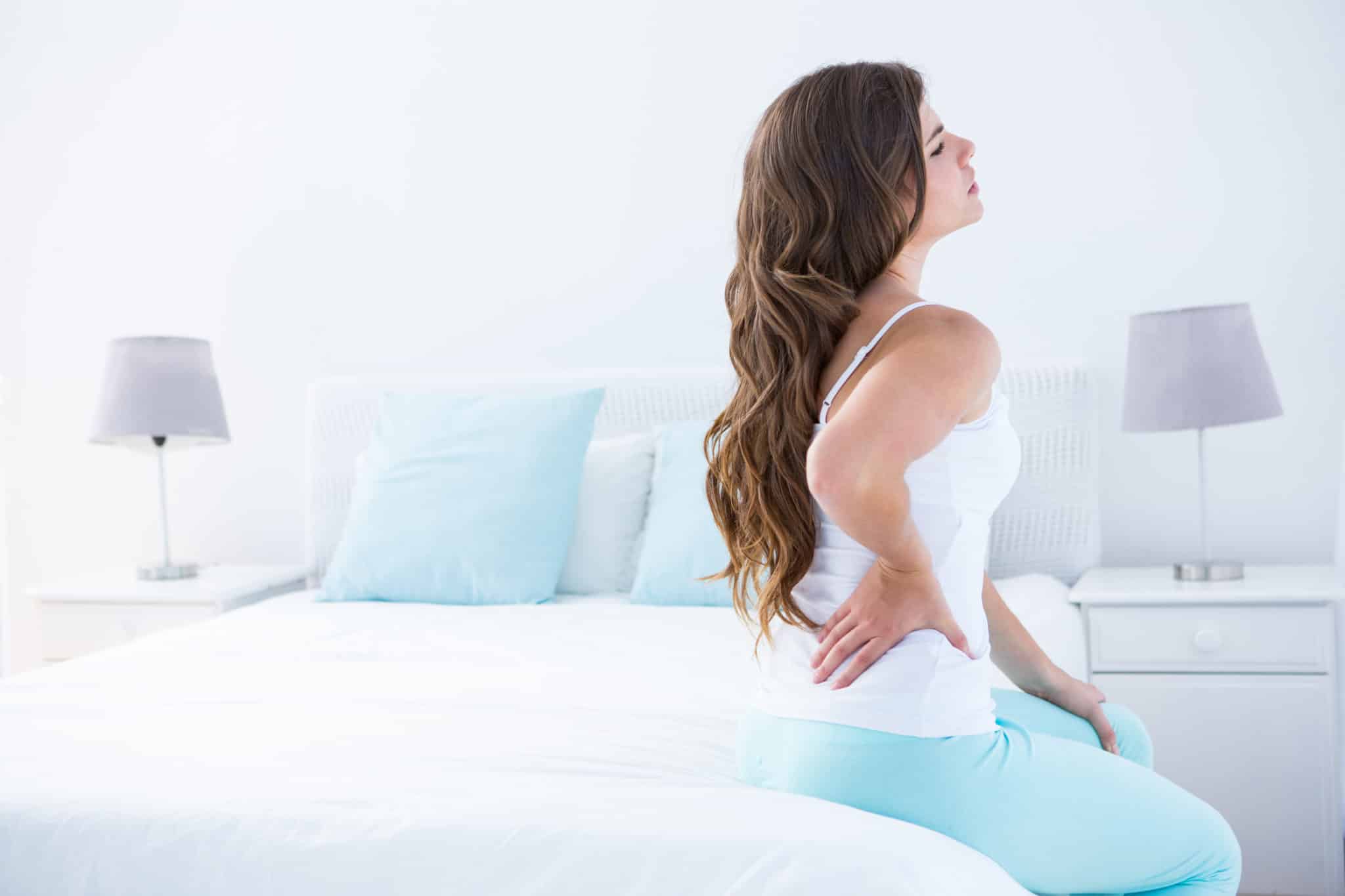If you’ve ever wanted to break up with your back pain, you’re not alone. A whopping 80% of Americans deal with back pain at some point in their life, whether from a chronic condition or injury. And although it’s a highly prevalent issue, most people don’t know how to solve it. We’ll take you through the different causes of back pain and various treatments available, including one very important remedy: exercise. For chronic back pain sufferers, exercise can be one of the most effective ways to increase range of motion, reduce pain, and improve their quality of life. Let’s explore what causes back pain and how to get rid of back pain for good.
What Causes Back Pain?
Your back and spine are complex—we often don’t think about them until they’re in pain. Back pain occurs when your muscles, discs, spinal joints, and nerves fail to work together properly or are out of alignment. There are many different causes of back pain, and they can be chronic or acute—meaning long-lasting or short-term (six months of less.) Here are the most common causes of back pain:
Arthritis
Arthritis is a joint disease that causes inflammation and swelling. If you have arthritis, you can have pain or stiffness in many different places, but the back is a common area.
Disc Problems
The discs between your joints are like shock absorbers that contain soft tissue; this tissue can come out due to wear and tear, causing a herniated or slipped disc. You may also have degenerative disc disease, which becomes more common as you age. Degenerative disc disease occurs when your discs shirk or tear, causing the bones to rub together.
Lifestyle Triggers
The mind-body connection is more powerful than you think; many cases of back pain are made worse by stress or depression. Back pain can also be triggered by poor posture or slouching over a desk, not exercising enough, or being overweight.
Related: 7 Simple Stretches You Can Do at Your Desk
Scoliosis
Scoliosis is a curvature of the spine that’s usually present throughout your life. However, it can sometimes only present with pain many years later. Testing for scoliosis is easy, so if you suspect this might be the case, ask your doctor to check.
Sprains, Strains, and Spasms
Car accidents, athletic injuries, or improperly lifting heavy objects can all cause injury to the ligaments, tendons, and muscles that support the spine and its joints. These sprains, strains, or back “spasms” (think of when someone says they “threw out their back”) often cause acute pain, meaning with the proper treatment it can resolve itself over time.
How To Treat Back Pain
You know you have back pain: now what? The treatment you use will depend on the cause, so please be sure to check with your doctor first. However, there are several things you can do at home to help ease your pain and find relief.
Yoga
Don’t underestimate the power of yoga to treat back pain. Yoga naturally helps strengthen and lengthen your spine, stretch your muscles, and fix your back’s alignment, which can often be at the root cause of persistent back pain for those of us who sit at a desk all day. In fact, according to a study in the Archives of Internal Medicine, chronic back pain sufferers who practiced yoga on a regular basis were half as likely to need pain pills or over the counter treatments for their pain as non-yogis. Try these 12 yoga poses to alleviate back pain today:
Foam Rolling
Using a foam roller is a way to perform self-myofascial release—a fancy term for self-massage that relieves muscle tension. (Foam rollers are relatively inexpensive; this foam roller on Amazon is only $13.99) Practice this move, among many others, to find back relief using your foam roller:
Back Roll

1) Begin in a slightly reclined position with the foam roller under your mid back, feet hip-width apart.
2) Walk feet slowly forward as the roller glides up your back. Stop and concentrate on any tight areas. (Note: do not foam roll the low back. Try a massage or tennis ball on either side of the spine to help relieve tight muscles.)
3) Move forward and back for 30-60 seconds.
Hot Or Cold Therapy
Did you know that different pain responds better to hot or cold treatment? As a general rule of thumb, acute back pain responds best to cold therapy, while chronic back pain is better treated with heat.

Physical Exercise
We touched on the fact that yoga is helpful in dealing with back pain, but let’s delve further into how exercise of all kinds can greatly reduce your back pain…
3 Ways Exercise Helps Treat Back Pain
When your back is in pain, the last thing you may feel like doing is moving around. But here’s the truth: for many instances—especially when dealing with chronic aches or pains that arise from poor posture or simply getting older—exercise is the number one prescription for back pain.
1. Promotes Disc Health
Remember how we talked about the discs between your joints, and how they can be damaged from wear and tear? Exercise helps your discs swell with water and squeeze it out, like a sponge. This action is the mechanism by which your discs receive nutrients. In essence: exercise keeps your discs—and thus your joints—better lubricated, keeping pain at bay.
2. Decreases Stiffness
Exercise also reduces stiffness in the back. If you’ve ever woken up with a stiff back, you know just how unpleasant it is. But getting some exercise in can keep your ligaments and tendons flexible, helping you increase your range of motion and reducing that feeling of stiffness.
3. Strengthens Muscles
Exercise can help strengthen and repair the muscles that support the back, which is so important not only to reduce your pain but to prevent further injury. When your back and core muscles are weak, for example, they cannot support the back properly. Strengthening your back through abdominal and back exercises can help keep everything stable, strong, and flexible, alleviating your current pain and preventing future pain! Check out these 10 exercises for your back:
Dealing with back pain is unpleasant at best and debilitating at worst. Talk to your doctor about your individual circumstances, but also be your own advocate and be proactive about your pain management. Exercise, do yoga, foam roll, and manage your stress levels. Your back does so much for you—treat it well and it will love you back.

3 Comments
Ayat Thakur on September 4, 2017 at 12:08 AM
Thanks for the tips and video for dealing with back pain. Due to sitting job back pain is common for me then i read your blog, That's a lot of help for me. So I followed the tips you told. Thereby, I was quite relieved from the back pain.
Peggy on July 29, 2017 at 9:30 PM
Great video of good poses for the back. Some I have done, one or two I don't know if I can do, but great to have the list!!
Mahmood on October 10, 2015 at 8:08 AM
I read your article about Back pain They are really scientific in Nature Well written Well demonstrated by pictures And they really helped me Thanks